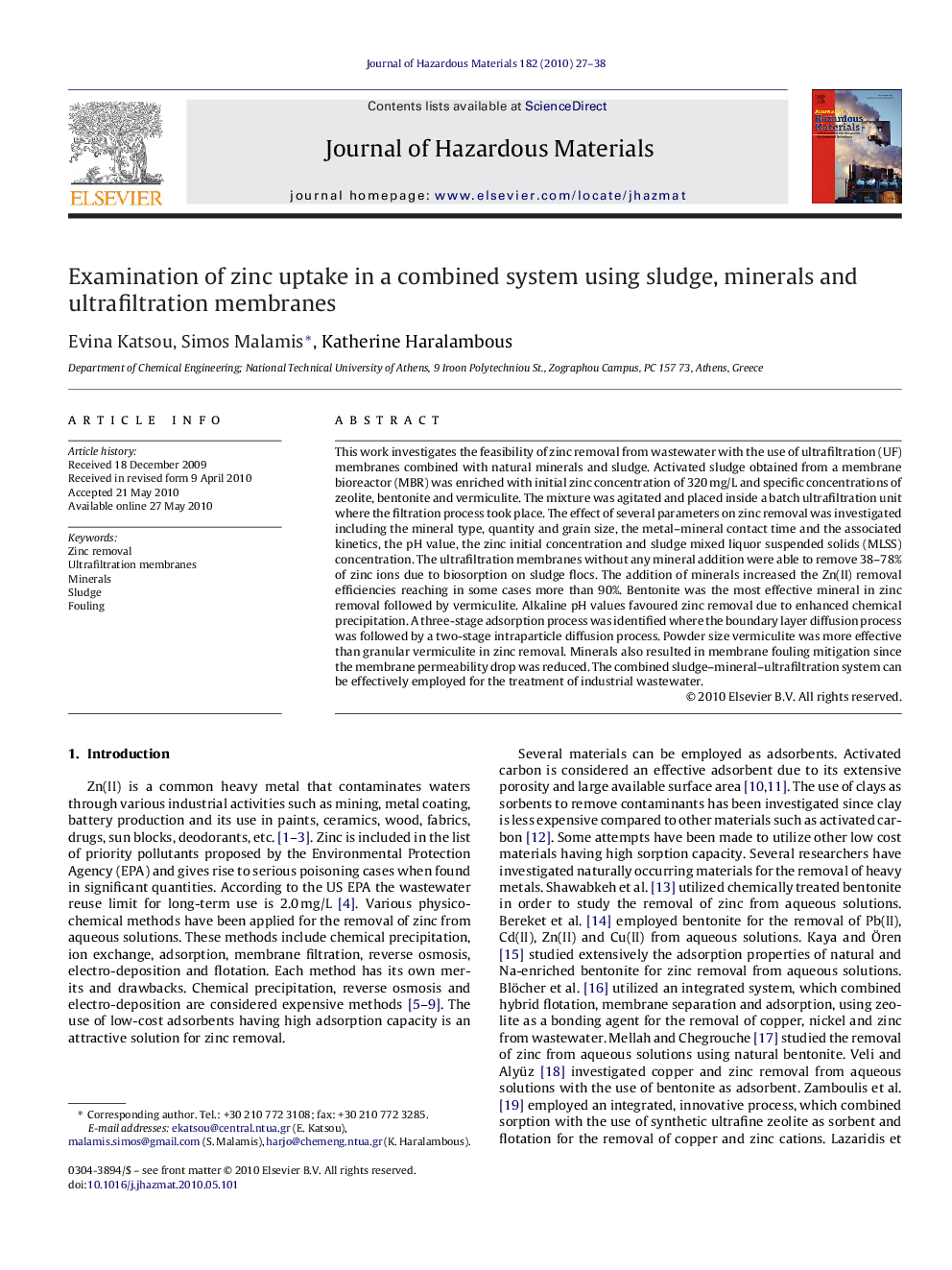| Article ID | Journal | Published Year | Pages | File Type |
|---|---|---|---|---|
| 579656 | Journal of Hazardous Materials | 2010 | 12 Pages |
Abstract
This work investigates the feasibility of zinc removal from wastewater with the use of ultrafiltration (UF) membranes combined with natural minerals and sludge. Activated sludge obtained from a membrane bioreactor (MBR) was enriched with initial zinc concentration of 320Â mg/L and specific concentrations of zeolite, bentonite and vermiculite. The mixture was agitated and placed inside a batch ultrafiltration unit where the filtration process took place. The effect of several parameters on zinc removal was investigated including the mineral type, quantity and grain size, the metal-mineral contact time and the associated kinetics, the pH value, the zinc initial concentration and sludge mixed liquor suspended solids (MLSS) concentration. The ultrafiltration membranes without any mineral addition were able to remove 38-78% of zinc ions due to biosorption on sludge flocs. The addition of minerals increased the Zn(II) removal efficiencies reaching in some cases more than 90%. Bentonite was the most effective mineral in zinc removal followed by vermiculite. Alkaline pH values favoured zinc removal due to enhanced chemical precipitation. A three-stage adsorption process was identified where the boundary layer diffusion process was followed by a two-stage intraparticle diffusion process. Powder size vermiculite was more effective than granular vermiculite in zinc removal. Minerals also resulted in membrane fouling mitigation since the membrane permeability drop was reduced. The combined sludge-mineral-ultrafiltration system can be effectively employed for the treatment of industrial wastewater.
Related Topics
Physical Sciences and Engineering
Chemical Engineering
Chemical Health and Safety
Authors
Evina Katsou, Simos Malamis, Katherine Haralambous,
